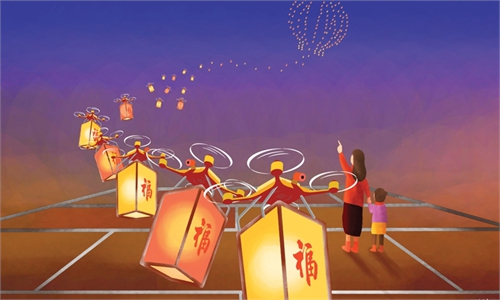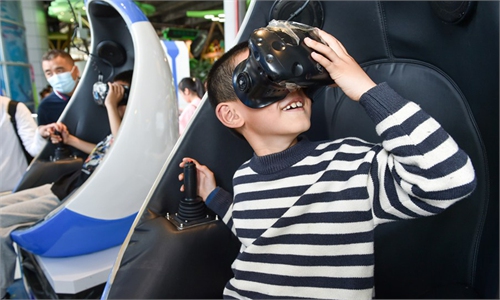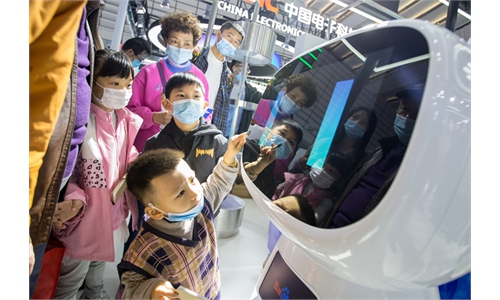Will XR unlock new opportunities?
Novel headset is lifting market expectations, may lure more players to join race
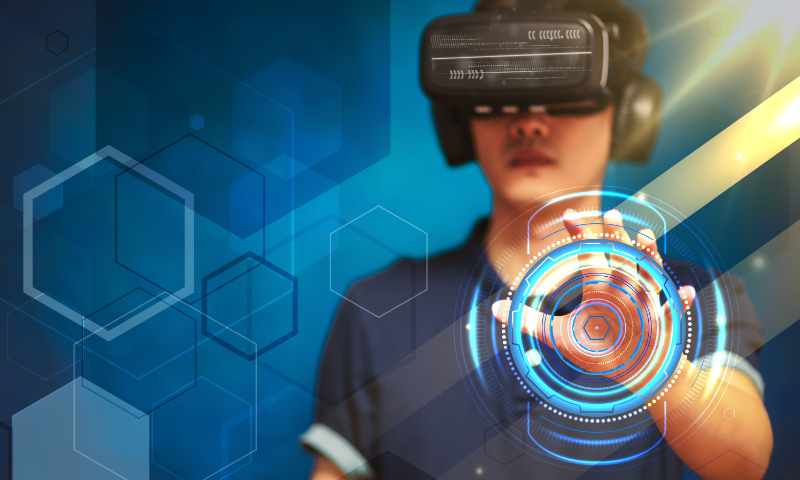
A man wears a VR device. Illusion: VCG
Like riding a roller coaster, China's XR (extended reality) sector has met with ups and downs during the past two years. Players in the circle are adamant on the emerging trend, waiting for a product that could help boost morale. Now it has just arrived.
US tech giant Apple launched its Vision Pro headset on June 5 during the 2023 Worldwide Developers Conference (WWDC) which is a "spatial computer that seamlessly blends digital content with the physical world, while allowing users to stay present and connected to others," so it could offer a mixed reality (MR) experience.
Featuring Vision-OS, the world's first spatial operating system, the product enables users interact with digital content in a way that feels like it is physically present in their space.
One key difference between the new Apple product and its competitors is that it displays the user's eyes when someone is nearby, a function that gives the headset a more immersive feel.
More immersive feel
As Apple CEO Tim Cook said, the new product could spark the dawn of spatial computing, just like how the iPhone changed the world of mobiles and the MacBook brought people to personal computing.
Despite being lauded as an impressive and technologically groundbreaking product, the Apple headset, priced at $3,499, has its own issues.
In China, where there is a huge group of Apple fans, social media users have divided opinions on Vision Pro. Some marveled at the high tech it has adopted, while others doubted the possibility of its wide usage in real life similar to mobile phones or laptops.
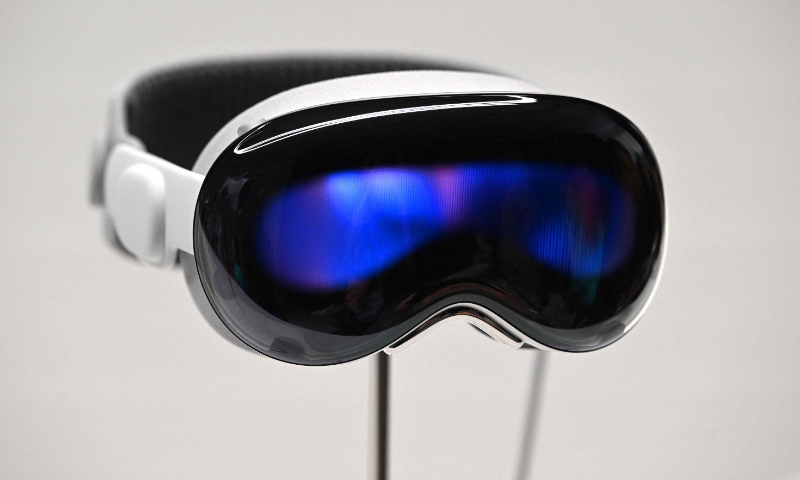
Apple's new Vision Pro virtual reality headset is displayed in California, on June 5, 2023. Photo: VCG
Ming-Chi Kuo, a renowned Apple analyst, said that AIGC (AI-generated content) can change the future more than the Apple headset.
Apple's innovative design and spatial computing vision does not indicate its "necessity in daily use," Kuo said.
Jeremy Jia, an investment manager in the technology, media, and telecom sector, told the Global Times that the product is hard to be popularized in the consumer segment in a short time because its market positioning is more tilted toward professionals and developers.
"It takes time to bring down costs and when that moment comes, it could become an everyday gadget," said Jia, adding that the Apple product has effectively pointed the way for a productivity tool.
Kuo also suggested closely monitoring pre-order demand and whether Apple can provide more attractive apps, content or ecosystems before the launch.
Apple said the headset will hit the market early next year, starting in the US.
Falling into the category of XR, a buzzword that refers to real-and-virtual combined environments and human-machine interactions generated by wearable devices and computer technology, the Apple Vision Pro has cast a silver lining in the XR sector, industry observers told the Global Times.
XR is actually an umbrella term encapsulating virtual reality (VR), augmented reality (AR) and MR.
Shot in the arm
"I think Apple's Vision Pro could serve as a shot in the arm for the whole sector, which has been charging ahead with difficulties," a senior executive at a Beijing-based VR firm, who asked to speak on anonymity, told the Global Times.
In 2021, with the term "metaverse" gaining popularity in China, the XR technologies behind it attracted more attention, winning bulk support from venture capital firms.
However, the industry met with a cold shoulder a year later when AR/VR headset shipments tumbled and tech giants both in the US and China started to roll back their metaverse teams while embracing the frenzy aroused by ChatGPT, an OpenAI-developed AI tool that has such abilities as writing poems, composing music, drawing paintings and generating humanlike responses based on user prompts driven by large language models.
Meta Platforms, the parent of Facebook which has spent much on its big metaverse dreams, is slashing jobs in a bid to recover from losses and invest in the metaverse.
In February, Chinese tech company Tencent reportedly overhauled the hardware development roadmap of its XR business, and staff involved in the business transition will also be adjusted, the Global Times learned from sources close to the company.
It is noteworthy that the term "metaverse" didn't appear in the Apple presentation, a sign that the US firm is steering away from "a sinking ship," the executive said.
The launch of Apple's Vision Pro also came at a moment when AR/VR shipments are sliding.
Global shipments of AR/VR headsets slowed significantly in the first quarter of this year as macroeconomic conditions worsened and the market cooled compared with the pandemic-driven highs seen last year, according to a report by IDC released on June 1.
The overall AR/VR headset market declined 54.4 percent year-on-year in the quarter, with VR headsets representing 96.2 percent of headsets shipped.
Shipments of AR and VR devices in the Chinese market fell 38 per cent to 173,000 units in the quarter, IDC data showed.
Major players in the sector included ByteDance's Pico, which held a 43 percent market share last year, followed by DPVR with 36 percent share. iQIYI, HTC and NOLO, each of which captured a single-digit share, also made it to the top five, according to research firm Counterpoint.
After the release of Apple's game changer product, most Chinese leading AR/VR headset makers are expected to launch their products from the end of this year to 2024, said Zhao Siquan, a senior analyst at the China branch of IDC.
Zhao forecast that manufacturers without a presence in the sector will quickly enter the market, which will intensify competition.
At present, shipments of consumer electronics terminals such as smartphones are stuck in a growth bottleneck, and vendors are eager to explore new growth points in next phase competition.
Chinese smartphone giant Oppo debuted a MR headset powered by Qualcomm's Snapdragon XR2 Plus chipset at the end of May, racing to get a slice of the market.
"For domestic players, the direction has become clear, now they can do their utmost to bring down costs by leveraging the powerful supply chain in China," Jia said.

